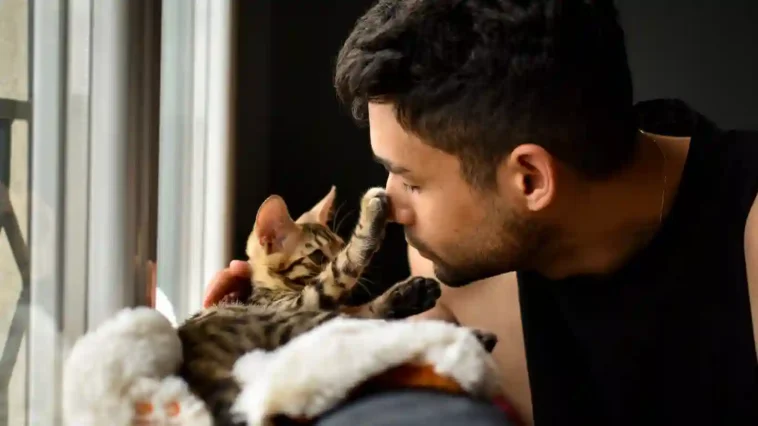You find a tiny, squeaking kitten—or maybe a whole litter—barely the size of your hand. Their eyes aren’t even open yet, and there’s no mother in sight. It’s both heart-melting and terrifying. What do you do now? How do you keep them alive, warm, and healthy?
Caring for newborn kittens is delicate, but it’s not impossible. You can give them the best possible start with patience and much love.
How Old Are They? (And Why It Matters)
Before anything else, try to figure out how old the kittens are. Their needs change quickly, week by week.
- 0–1 weeks: Eyes closed, ears folded, completely helpless.
- 1–2 weeks: Eyes begin to open, but still can’t regulate their body temperature.
- 2–3 weeks: Ears perk up; they start to waddle, still very dependent.
- 3–4 weeks: First teeth appear; they start exploring more and must begin litter training soon.
Knowing their age helps you decide what to feed them, how to keep them warm, and when to start teaching them basic behaviors.
How to Care for Newborn Kittens Without Mother
If the mother cat isn’t around, don’t panic. It happens. The most important things they need are warmth, nutrition, help with elimination, and gentle socialization.
Keep Them Warm
Newborn kittens can’t regulate their body temperature. If they get too cold, they can’t digest food properly and may stop moving.
- Use a heating pad wrapped in a towel or a warm water bottle placed under their bedding.
- Keep the temperature around 85-90°F for the first week.
- Never place them directly on a heat source.
Check their ears and paws often. If they’re cold to the touch, they need warmth immediately.
Feed Them the Right Way
Cow’s milk is a no-go. You need kitten formula (KMR – Kitten Milk Replacer). Most pet stores carry it. Use a kitten-specific bottle, and always warm the formula before feeding.
How often to feed:
- 0–1 weeks: Every 2–3 hours, including overnight
- 1–2 weeks: Every 3–4 hours
- 3–4 weeks: Every 4–5 hours; start introducing soft kitten gruel
Hold them upright during feeding. If milk comes out of their nose, stop and reposition them.
Help Them Go Potty
Until about 3 weeks of age, kittens can’t pee or poop on their own.
- After every feeding, gently rub their lower belly and bottom with a warm, damp cotton ball or tissue.
- It mimics how the mother cat would lick them to stimulate elimination.
It might feel strange at first, but keeping them healthy and preventing infections is necessary.
Introducing the Litter Box (Yes, This Soon!)
Around 3 to 4 weeks, your kittens will be curious enough to use the litter box.
Do mother cats teach kittens to use the litter box? Yes! But if you’re filling in for mom, you can guide them, too.
- Use a shallow box with non-clumping litter.
- Gently place them in the box after meals or naps.
- If they squat elsewhere, calmly move them to the tray.
They’ll catch on quickly with consistency and encouragement.
And if you’re wondering when it is too late to litter train a cat, – it’s not. Even older cats can learn with the proper support. For adult rescues, here’s a helpful reminder: how to train an older cat to use a litter tray involves patience, choosing the correct box, and keeping it in a quiet place.
What If They Have Fleas?
Newborn kittens and fleas are a dangerous combo. Fleas can cause severe anemia in tiny bodies.
But never use commercial flea treatments on babies under 8 weeks old. Instead:
- Use a flea comb to remove fleas from their fur gently.
- If needed, bathe them carefully in warm (not hot) water—dry them immediately.
- Try a homemade flea spray for cats using diluted apple cider vinegar for a safe option. Spray on bedding, not directly on kittens.
And, of course, keep their bedding clean. Wash it daily in hot water until the fleas are gone.
Socialization and Gentle Handling
Once they’re stable and fed, start spending time with them. Handle them gently, talk to them, and let them explore your scent.
The more positive interactions they have early on, the better their chances of growing into friendly, well-adjusted cats. But remember, go slowly. If they’re not ready, give them time.
When to Take Them to the Vet
Even if everything seems fine, a check-up is always a good idea. But go urgently if you see:
- No appetite or refusal to eat
- Constant crying or listlessness
- Diarrhea or vomiting
- Trouble breathing
- Swollen abdomen
Your vet can also help set up a deworming and vaccination schedule once they’re old enough (around 6–8 weeks).
FAQs
How do I know if a kitten is cold?
Feel their paws and ears. If they’re cold, that’s a red flag. Shivering or limp behavior is also a warning.
Can I use a regular baby bottle for kittens?
It’s not ideal. Kitten bottles have a smaller nipples designed for their mouths.
How can I tell if they’re getting enough milk?
A full belly after feeding, steady weight gain, and quiet naps are good signs. Weigh them daily with a kitchen scale.
What should I do if I find just one kitten alone?
Wait and watch for the mother. If she doesn’t return in 1–2 hours, and the kitten is cold or crying, it’s time to step in.
Is it okay to sleep while caring for newborn kittens?
Yes, but you’ll need to wake up for night feedings. Try sleeping in shifts or setting alarms every few hours.
You’re Their World Right Now
Newborn kittens are fragile, yes. But they’re also incredibly resilient when they feel safe, warm, and loved.
You don’t have to be perfect. You just have to be present. Whether you’re bottle-feeding at 3 a.m. or gently cleaning tiny paws, every moment matters.
It’s hard work—but it’s also one of the most heartwarming things you’ll ever do.
And when those little eyes open, they look up at you like you’re the only thing in the world? That’s because, for now, you are.
You’ve got this.







GIPHY App Key not set. Please check settings